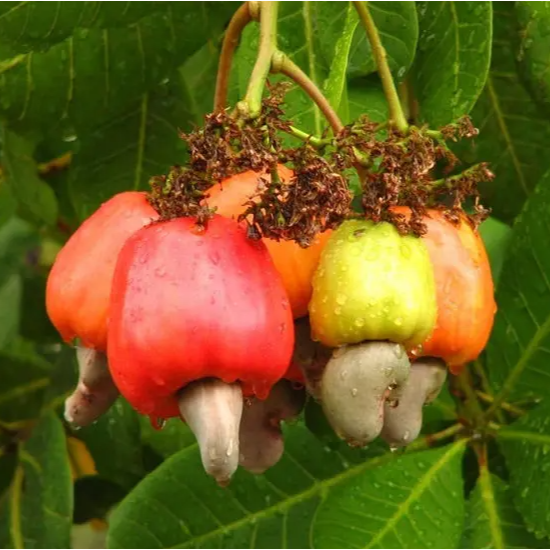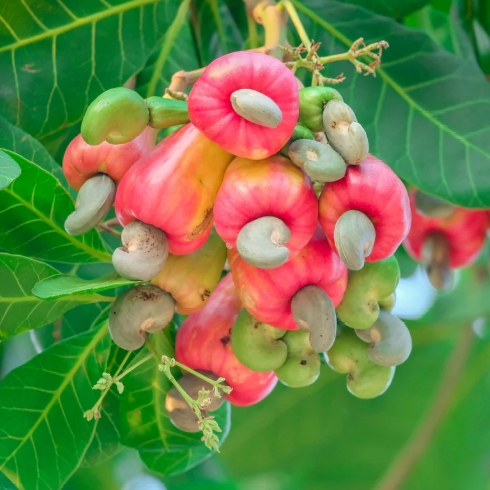rarefruittrees.ae
Cashew (Anacardium occidentale) - Seedling - LIVE PLANT
Cashew (Anacardium occidentale) - Seedling - LIVE PLANT
Couldn't load pickup availability
Plant Insights and Care
Cashew (Anacardium occidentale) is a resilient, fast-growing tropical tree known for producing both cashew nuts and the cashew apple. Native to northeastern Brazil, it is now widely cultivated across tropical regions, including Southeast Asia, Africa, and parts of the Middle East. The tree typically reaches 8–12 meters in height, with a broad, spreading canopy and distinctive thick, leathery leaves.
Cashew trees thrive in warm climates and prefer well-drained, sandy or loamy soils with a slightly acidic to neutral pH. They are highly drought-tolerant once established but require deep, infrequent watering during their early years. Full sun exposure is essential for healthy growth and optimal nut production. Pruning can help maintain shape, improve air circulation, and encourage higher yields. While cashew trees are relatively low-maintenance, they can be susceptible to pests such as fruit borers and fungal infections in overly humid conditions.
Key Points:
- Origin: Brazil; now grown in tropical regions worldwide.
- Climate: Prefers warm, humid to semi-arid tropical environments.
- Sun Exposure: Requires full sun for best growth and nut production.
- Watering: Drought-tolerant once mature; young trees need deep but infrequent watering.
- Soil: Prefers sandy or loamy, well-draining soil with a slightly acidic to neutral pH.
- Special Care: Benefits from pruning to improve air circulation and increase fruiting.
Fruit Profile
Cashew trees produce a unique fruiting structure where the edible cashew nut grows externally at the base of the cashew apple. The cashew apple is a fleshy, bell-shaped fruit that turns yellow, orange, or red when ripe. It has a juicy, sweet, and slightly astringent taste and is commonly used for juices, jams, and fermented drinks. The cashew nut itself must be processed carefully, as its outer shell contains a toxic resin that can cause skin irritation. Once roasted and shelled, the nut is a popular snack with a rich, buttery flavor.
Dive into the facts:
- Taste: Cashew apple is sweet and slightly astringent; the nut is rich and buttery.
- Appearance: A bell-shaped, brightly colored cashew apple with a hard-shelled nut attached to the bottom.
- Fun Fact: Despite being called a "nut," the cashew is technically a seed. The tree’s ability to thrive in poor soils makes it an important crop for reforestation and soil conservation in some tropical regions.
Share




